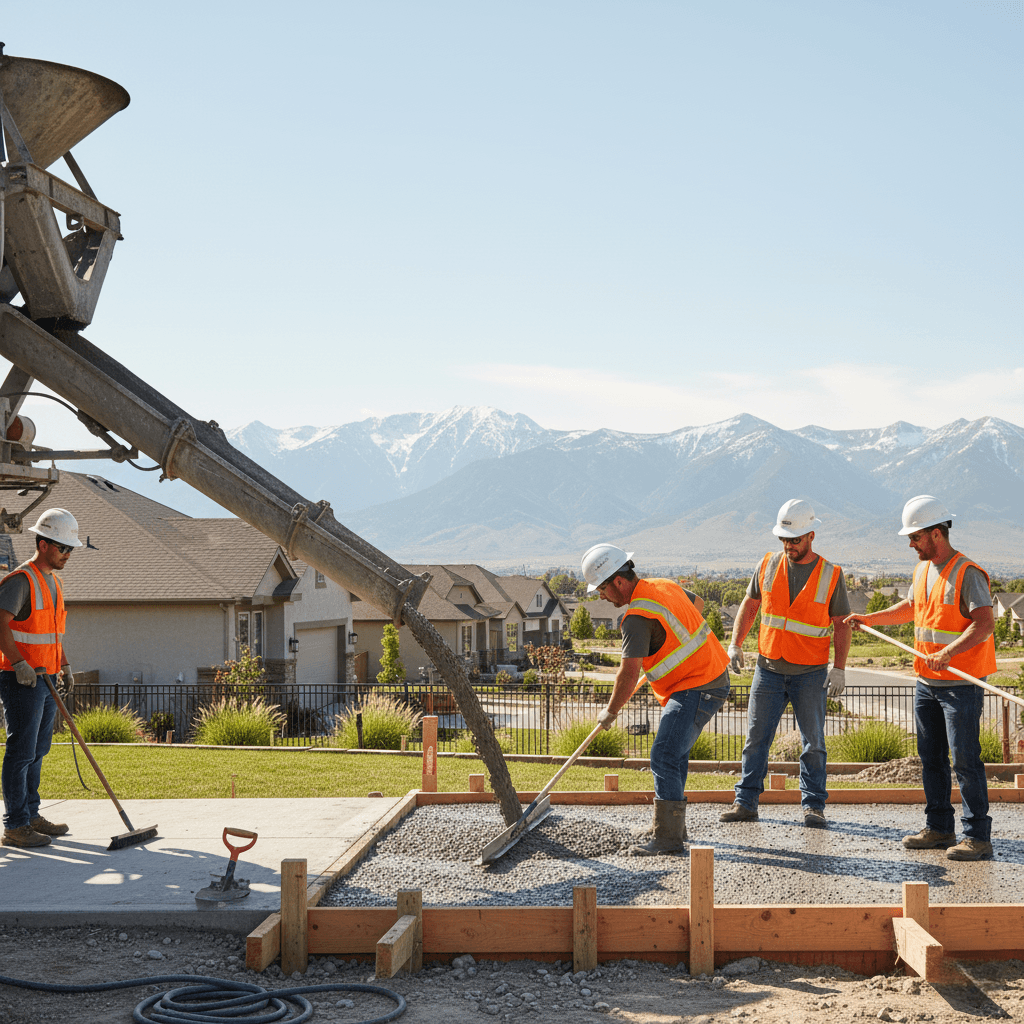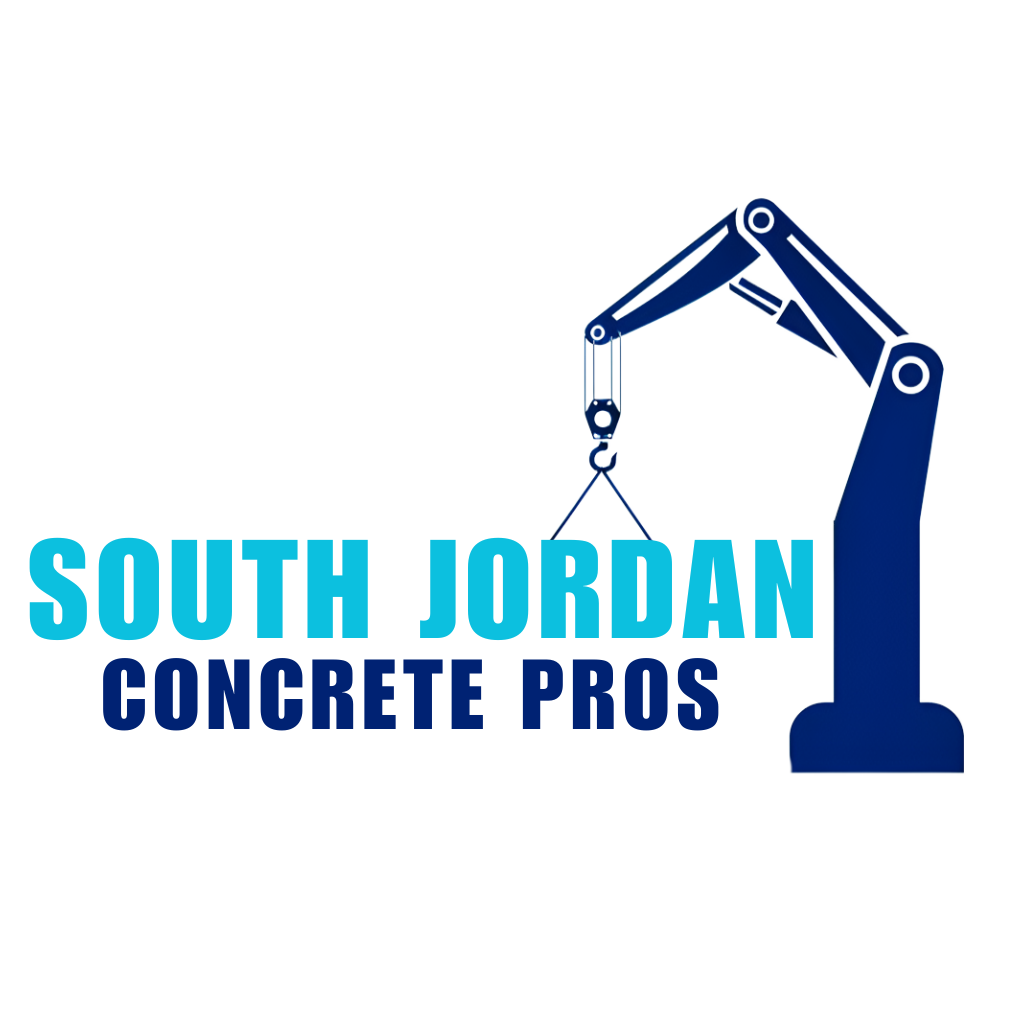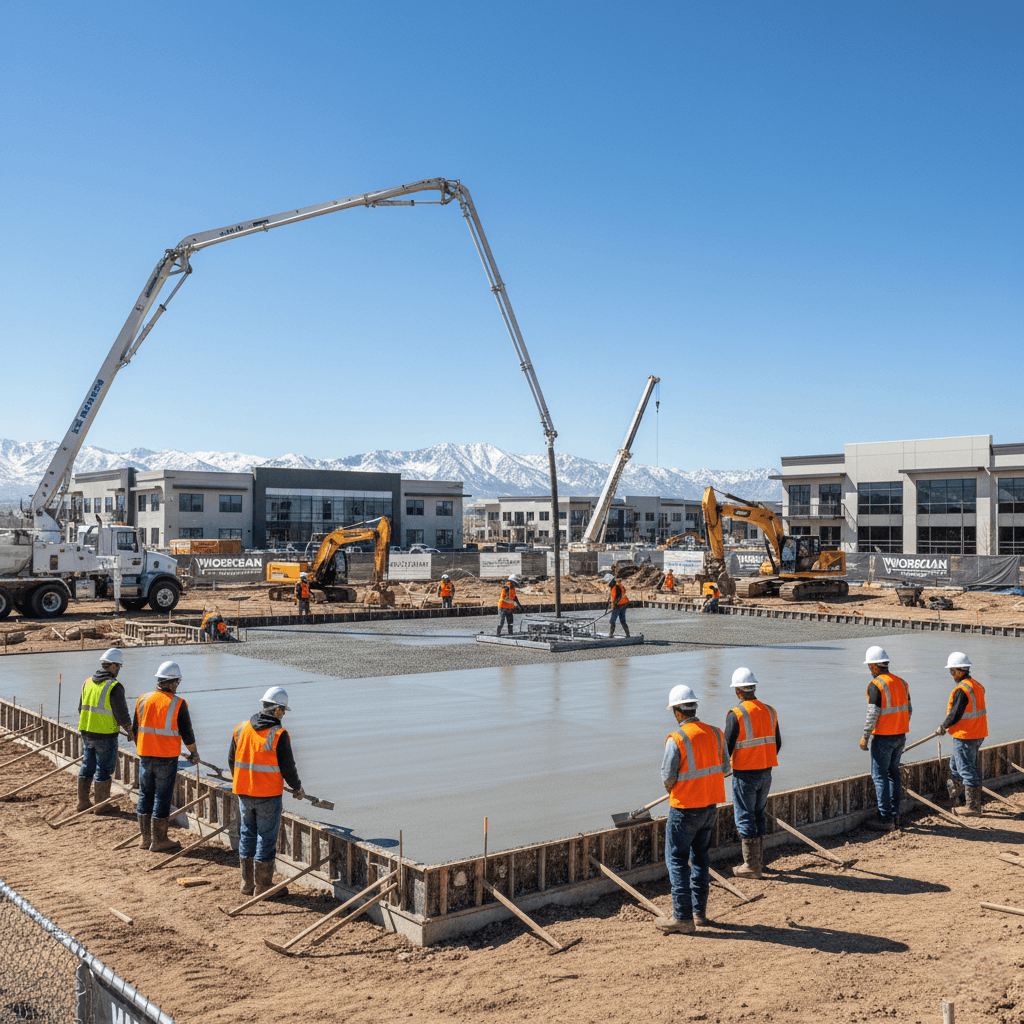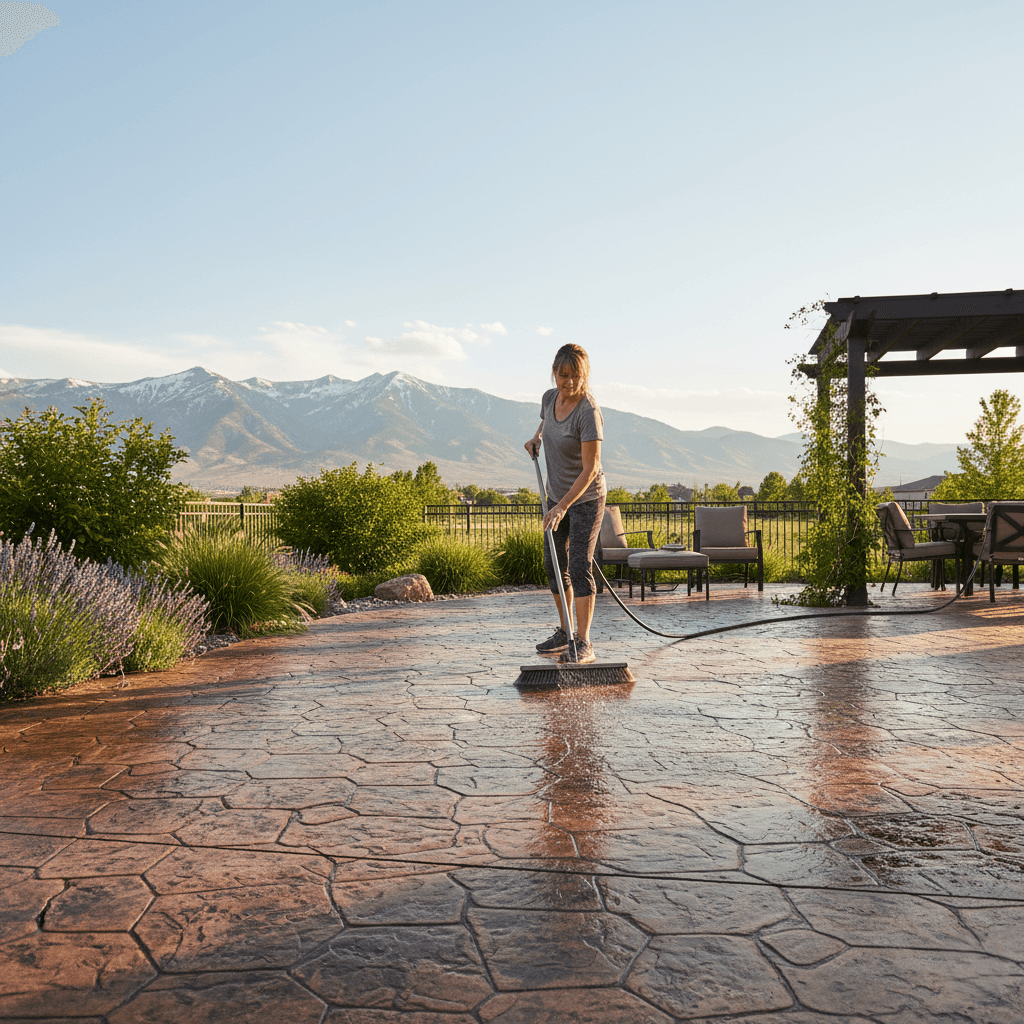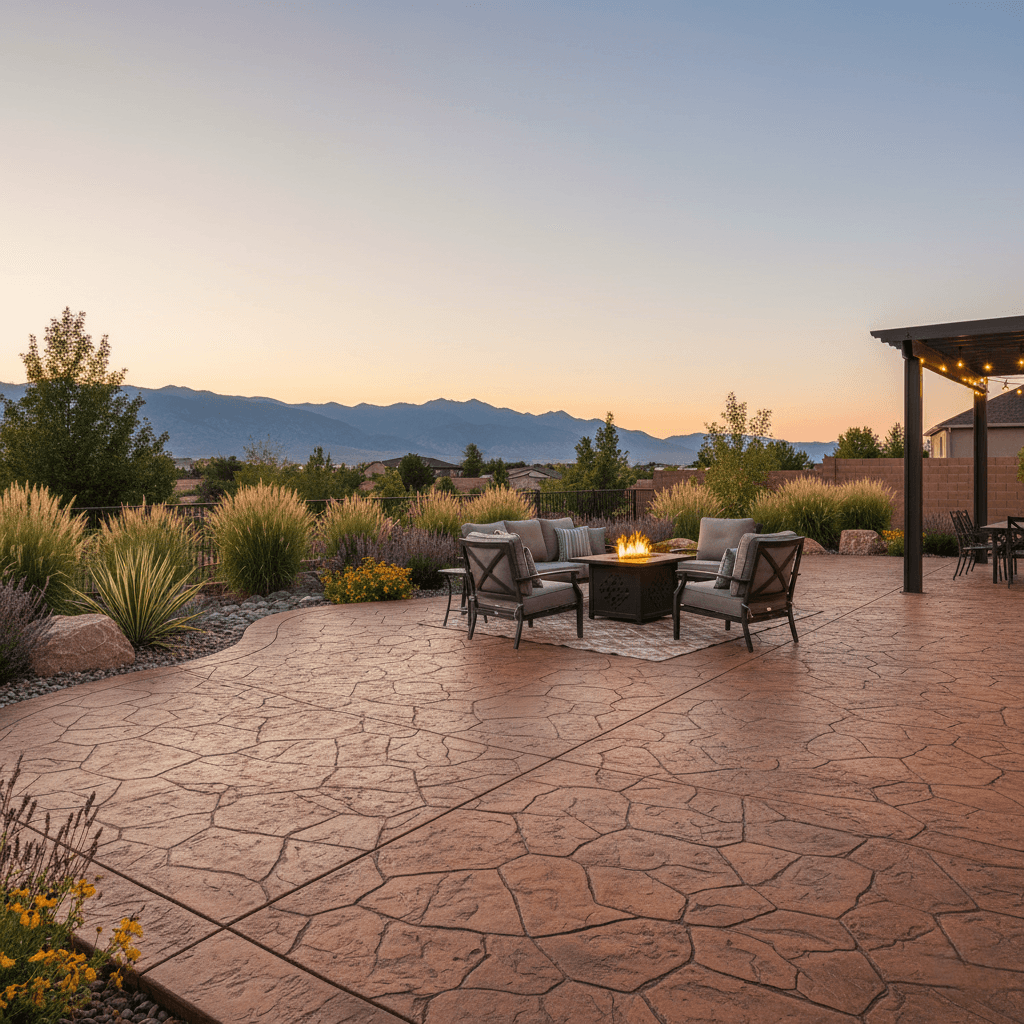Initial Planning and Site Assessment
Professional contractors begin with a comprehensive site evaluation to identify soil conditions, drainage patterns, and access requirements. Utility location services prevent costly damage to underground lines during excavation activities. Property boundaries and setback requirements ensure compliance with South Jordan’s zoning regulations and building codes. Design considerations include intended use, traffic patterns, and aesthetic preferences that influence thickness, reinforcement, and finish specifications. Climate factors specific to Utah’s freeze-thaw cycles affect mix design and installation scheduling decisions. Professional consultation addresses technical requirements while incorporating homeowner preferences and budget constraints.
Permit Requirements and Regulatory Compliance
South Jordan requires building permits for certain
concrete flatwork projects, depending on size, location, and structural requirements. Driveway modifications affecting public right-of-way access require additional approvals from engineering departments. Professional contractors handle permit applications and ensure compliance with local building codes throughout the installation process. ADA accessibility requirements may apply to commercial properties or public access areas within residential developments. Proper slope calculations and surface textures ensure compliance with safety standards while maintaining functional drainage. Professional design services incorporate regulatory requirements into project specifications seamlessly.
Site Preparation and Excavation
Excavation begins with precise marking of project boundaries using spray paint or stakes based on approved plans. Equipment selection depends on project size, soil conditions, and site accessibility within South Jordan neighborhoods. Proper excavation depth accounts for sub-base materials, concrete thickness, and final elevation requirements. Soil removal and disposal follow environmental regulations while minimizing disruption to surrounding landscaping and hardscaping features. Utility protection measures prevent damage to existing irrigation systems, electrical lines, and gas connections during excavation activities. Professional
concrete contractors coordinate with utility companies when necessary for safe excavation practices.
Sub-Base Preparation and Compaction
Quality sub-base materials provide a stable foundation that prevents settling and cracking over time. Granular materials like crushed rock or recycled concrete aggregate create proper drainage while supporting structural loads. Proper gradation ensures adequate compaction and load distribution across the entire project area. Compaction equipment achieves specified density requirements through systematic passes with plate compactors or vibratory rollers. Moisture content optimization during compaction prevents future settlement issues that compromise concrete flatwork integrity. Professional testing verifies compaction levels meet engineering specifications before concrete placement begins.
Forming and Reinforcement Installation
Concrete forms create precise edges and control final surface elevations throughout the installation process. Quality form materials resist concrete pressure while maintaining straight lines and proper grades. Professional installation includes adequate bracing and stakes that prevent movement during concrete placement and finishing operations. Reinforcement placement depends on project specifications and load requirements determined during design phases. Wire mesh or rebar installation follows engineering drawings with proper spacing, positioning, and concrete cover requirements. Chair supports maintain reinforcement position during concrete placement while ensuring adequate protection from moisture and corrosion.
Drainage and Joint Planning
Proper drainage design prevents water accumulation that causes freeze-thaw damage during Utah’s winter months. Surface slopes direct water away from structures while maintaining functional accessibility and aesthetic appeal. Drainage integration with existing landscape features prevents erosion and foundation issues. Control joint placement prevents random cracking by creating predetermined locations for concrete movement. Joint spacing calculations consider concrete thickness, aggregate size, and environmental conditions specific to South Jordan’s climate. Professional joint installation includes proper sealant application that maintains weather protection over time.
Concrete Mixing and Delivery
Mix design selection considers strength requirements, workability needs, and environmental exposure conditions throughout the Salt Lake Valley. Air entrainment protects concrete from freeze-thaw damage while maintaining workability for proper placement and finishing. Quality aggregates from local Utah sources provide cost-effective solutions that meet performance specifications. Concrete delivery scheduling coordinates with weather conditions, crew availability, and project timeline requirements. Ready-mix trucks navigate South Jordan streets while considering weight restrictions and neighborhood access limitations. Proper timing ensures concrete placement begins immediately upon delivery to maintain workability and prevent cold joints.
Concrete Placement Techniques
Systematic placement begins at one end and progresses methodically to prevent cold joints and ensure uniform consolidation. Concrete pumping equipment handles projects with limited access or distant placement locations efficiently. Proper consolidation using vibrators eliminates air voids while preventing over-vibration that causes segregation. Screeding operations level concrete surfaces to proper elevations using straight-edge tools guided by forms or grade stakes. Multiple passes ensure uniform thickness and surface smoothness across the entire project area. Professional techniques maintain proper concrete consistency throughout placement operations.
Surface Finishing and Texturing
Float finishing removes surface irregularities while bringing cream to the surface for proper troweling operations. Timing considerations balance workability requirements with weather conditions and concrete setting characteristics. Professional finishers recognize optimal timing for each finishing step to achieve the specified surface quality. Texture application creates appropriate slip resistance for safety while maintaining aesthetic appeal. Broom finishes provide excellent traction for driveways and walkways exposed to South Jordan’s winter weather conditions. Specialized texturing tools create decorative patterns that enhance visual appeal without compromising functionality.
Decorative Finishing Options
Stamped concrete creates attractive patterns that mimic expensive materials like natural stone, brick, or wood at a fraction of replacement costs. Color integration through integral pigments or surface treatments enhances visual appeal while maintaining long-term durability. Professional application ensures consistent results that complement property architecture and landscaping. Exposed aggregate finishes reveal decorative stones within the concrete mix for a unique textural appeal. Specialized techniques control exposure depth while maintaining surface durability and slip resistance. Professional finishing creates a uniform appearance that withstands Utah’s weather conditions and normal wear patterns.
Curing and Protection Procedures
Proper curing maintains concrete moisture and temperature conditions that optimize strength development and durability characteristics. Curing compounds or wet coverings protect surfaces from rapid moisture loss during critical early strength periods. Utah’s dry climate requires special attention to moisture retention during concrete curing processes. Temperature protection prevents freeze damage during cold-weather construction while avoiding rapid moisture loss during hot summer conditions. Insulating blankets or heated enclosures maintain proper curing temperatures when weather conditions threaten concrete quality. Professional monitoring ensures optimal curing conditions throughout the critical strength development period.
Timeline Considerations and Weather Factors
Project scheduling considers South Jordan’s seasonal weather patterns and their impact on concrete placement and curing operations. Spring and fall seasons provide optimal conditions for most concrete flatwork installations. Summer heat requires special precautions, while winter construction demands additional protection measures. Curing periods extend project timelines but ensure proper strength development before traffic loads and normal use. Professional scheduling coordinates multiple trades and activities while maintaining quality standards throughout the installation process. Realistic timelines account for weather delays and proper curing requirements.
Quality Control and Final Inspection
Professional quality control includes concrete testing, placement monitoring, and finishing verification throughout the installation process. Slump tests verify proper consistency while air content measurements ensure freeze-thaw protection. Compressive strength testing confirms concrete meets specified requirements for long-term performance. Final inspections verify surface quality, joint placement, and overall workmanship before project acceptance. Professional documentation includes test results, material certifications, and installation records for warranty protection. Quality assurance programs identify and address any deficiencies before project completion.
Long-Term Maintenance and Care
Initial curing completion allows light foot traffic but requires extended protection from heavy loads and vehicular use. Sealing applications protect decorative finishes and enhance stain resistance for long-term appearance maintenance. Professional guidance establishes appropriate maintenance schedules and care procedures. Seasonal maintenance considerations include proper snow removal techniques that protect surface finishes from damage. Joint sealing prevents moisture infiltration and freeze-thaw damage that compromises structural integrity. Professional maintenance programs extend service life while preserving aesthetic appeal and functionality.
South Jordan Concrete Pros manages every aspect of concrete flatwork installation from initial planning through final completion, ensuring professional results that enhance your property for decades to come. Our comprehensive approach includes proper site preparation, quality materials, skilled installation, and ongoing support for optimal performance throughout Utah’s challenging climate conditions.
